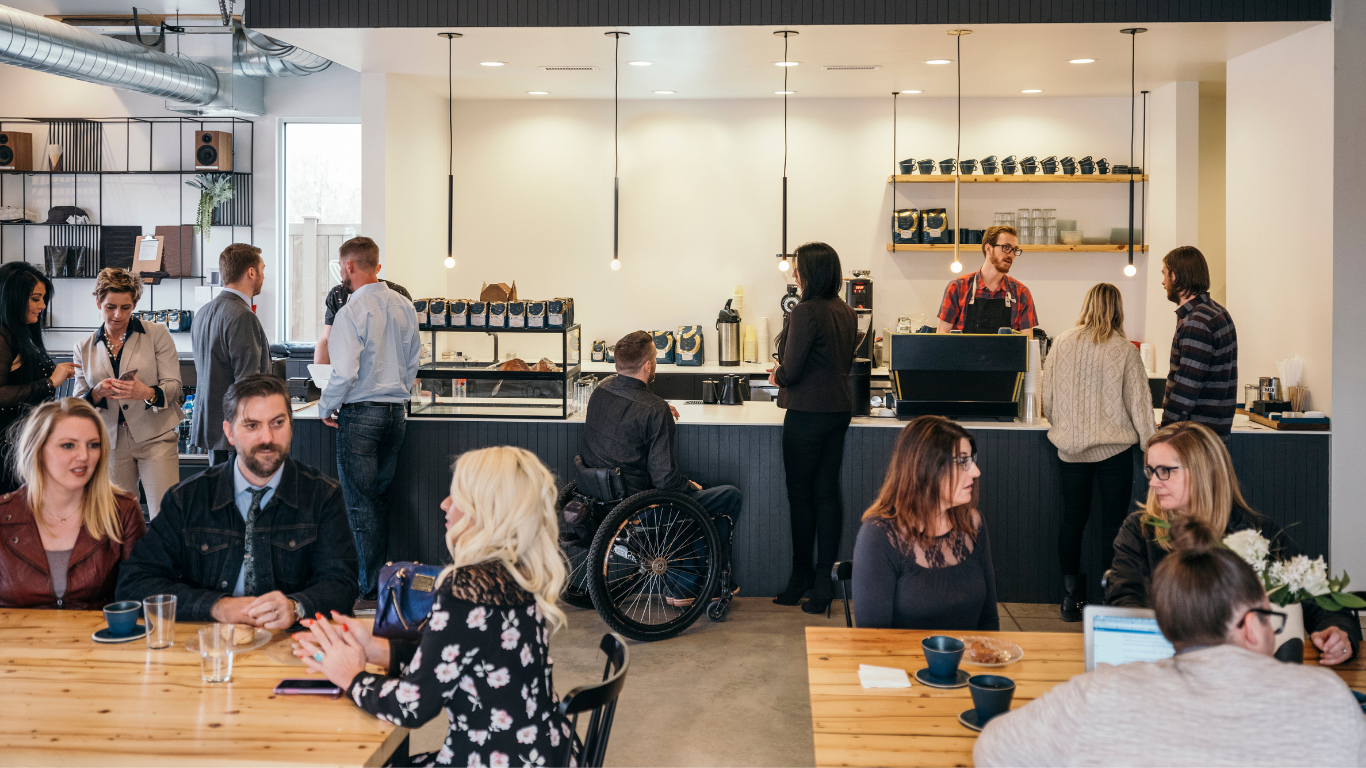Blurring the lines between retail and food & beverage (F&B) is becoming increasingly common. More businesses are blending shopping with dining, creating immersive customer experiences that go beyond traditional retail or restaurant models. At the core of this shift lies integrated commerce—a unified system that connects operations, customer interactions, and sales channels in real time.
While integrated commerce is often associated with retail, its applications in F&B are equally transformative, especially for businesses that merge the two worlds. In this article, we’ll explore what integrated commerce is, its growing adoption in retail, and how its benefits extend seamlessly into F&B operations.

What Is Integrated Commerce?
Integrated commerce refers to a unified platform that connects all aspects of a business, from inventory and sales to customer data and reporting. Unlike systems patched together with middleware or manual updates, integrated commerce offers a single source of truth. This keeps all channels and touchpoints in sync. It gives businesses accurate and useful data at all times.
For example, a unified commerce platform connects a retailer’s eCommerce store with its in-store POS, enabling real-time updates on inventory, pricing, and customer data. But it’s more than that, truly unified commerce connects all systems, including accounting and CRM. This removes the risk of selling items that are out of stock online while they are bought in-store. This ensures a smooth experience for both customers and staff.
Integrated commerce also reduces operational inefficiencies. Businesses no longer need to reconcile data manually or deal with mismatched information between systems. Instead, everything flows through one centralized platform, simplifying workflows and enhancing decision-making.
How Retailers Are Transforming Stores Into Seamless Ecosystems
Retail has been a leader in using integrated commerce. This change is driven by the need to meet growing customer expectations for smooth and personalized experiences. Today’s shoppers expect consistent service whether they’re browsing online, shopping in-store, or interacting with a brand through social media.
Unified Inventory Management
Integrated commerce allows retailers to manage inventory across multiple locations and channels in real time. For example, a customer shopping online can see if an item is available in a nearby store and reserve it for pickup. This level of visibility improves customer satisfaction and helps businesses avoid stockouts or overstocks.
Personalized Customer Journeys
Unified platforms give retailers a complete view of their customers’ purchase histories and preferences. This enables tailored marketing campaigns and personalized in-store experiences. For instance, sales associates can access customer profiles to recommend products based on past purchases.
Examples in Action
Large retailers like Marks & Spencer and Eataly are leveraging integrated commerce to combine retail with F&B experiences. Marks & Spencer’s in-store cafés complement their grocery and retail offerings, encouraging shoppers to spend more time (and money) in their stores. Similarly, Eataly’s fusion of Italian markets, restaurants, and cafés creates a cohesive brand experience powered by unified systems.
Why F&B Businesses Need to Think Like Retailers
Retail has taken the lead, but integrated commerce is also growing in food and beverage businesses. This is especially true for those with many revenue streams or complex operations. For cafés, bars, and restaurants, real-time integration can improve customer service, streamline operations, and boost profitability.
Order Management and Table Service
Integrated platforms allow staff to take orders on tablets, send them directly to the kitchen, and update inventory in real time. This eliminates delays and errors caused by manual order-taking or mismatched systems. Additionally, features like table management, bill-splitting, and payment processing are simplified, enhancing both staff efficiency and customer satisfaction.
Inventory and Menu Updates
Real-time synchronization ensures that menus reflect actual stock levels. If an item runs out, it’s immediately updated across all systems, preventing customers from ordering unavailable dishes. This is especially valuable during busy periods or for businesses with seasonal menus.
Enhancing Customer Loyalty
Unified commerce platforms can also support loyalty programs that reward customers across both retail and F&B channels. For example, a customer could earn points for a grocery purchase and redeem them at an in-store café. This creates a seamless and rewarding experience that encourages repeat visits.
Mercato: Blurring the Line Between Shopping and Dining
Mercato in Adelaide exemplifies the power of integrated commerce in blending retail and F&B. By uniting its Italian goods shop, café, and online store under one platform powered by Zoku’s Unified Commerce solution, Mercato ensures that its operations are synchronized across all channels.
Key Features at Mercato
- Real-time inventory updates ensure customers always have accurate information, whether shopping online or in-store.
- Café staff use tablets to manage table orders, split bills, and deduct wine servings from inventory instantly.
- Customers can shop for groceries and check out at the café counter, thanks to seamless POS integration.
- A single loyalty system spans all channels, allowing customers to earn and redeem rewards across retail and F&B purchases.
These integrations not only improve efficiency but also enhance the customer experience, turning every visit to Mercato into a memorable and cohesive journey.
Unified Commerce in Retail and F&B
As businesses continue to explore new ways to engage customers, the adoption of integrated commerce is set to grow. The benefits are clear: real-time synchronization reduces operational complexity, improves customer satisfaction, and creates opportunities for cross-channel engagement.
In F&B, where customer expectations for speed and accuracy are especially high, unified systems are becoming a necessity rather than a luxury. Businesses that embrace this technology can stay ahead of the competition, offering experiences that are not only convenient but also deeply engaging.
Integrated commerce is more than a technical solution—it’s a strategic advantage that enables businesses to connect with customers on a deeper level. Whether in retail, F&B, or a blend of both, unified systems like Zoku’s provide the tools to build stronger brands and more loyal customer bases.
The future of commerce lies in breaking down silos and creating seamless experiences. For businesses ready to embrace this shift, the possibilities are limitless.

